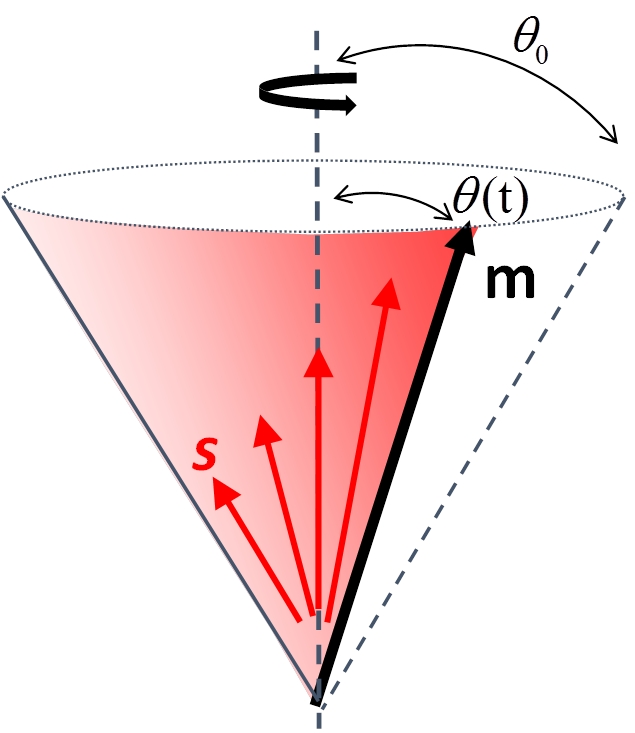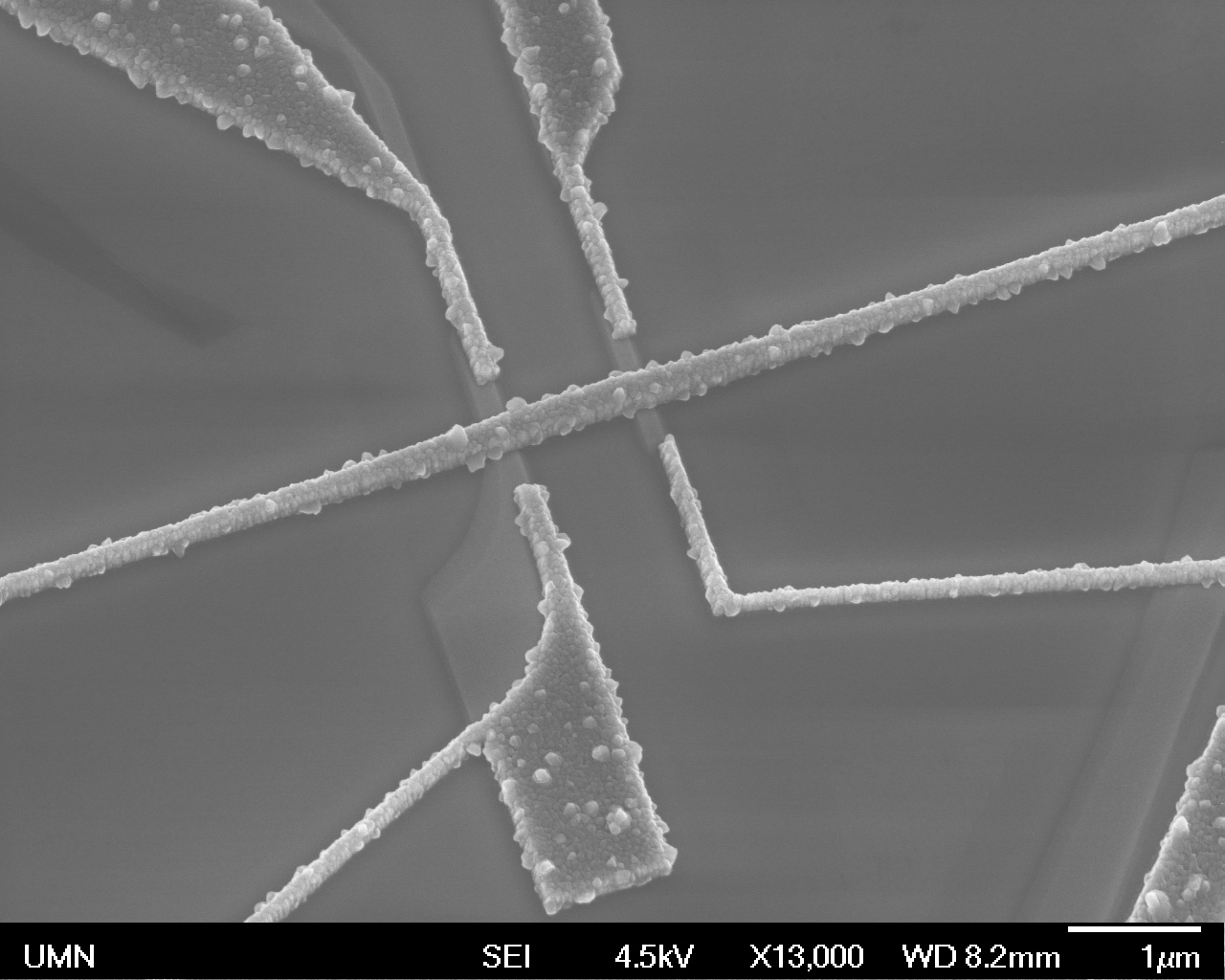

Main navigation | Main content
 Home News Overview Research Publications People Internal Wiki |
Current ResearchOverview: Spin Dynamics and TransportWhat are the fundamental limits on how fast bits on a hard drive can be written? How do these limits depend on the size and shape of the bits and how the bits are magnetized? Our research in spin dynamics addresses questions like these. We use time-resolved ferromagnetic resonance microscopy to make movies of magnetic processes on time scales less than 100 picoseconds (or 0.1 billionths of a second). We are investigating the dynamics of thin films that are patterned into shapes with typical dimensions of a few microns across. We are adapting the time-resolved ferromagnetic resonance microscopy technique for the study of materials that become ferromagnetic at low temperature, including an unusual class of systems known as ferromagnetic semiconductors.Semiconductors are widely used in electronic devices that process information, while magnetic materials are a fundamental element of storage technologies such as disk drives. Our research addresses the question of how semiconductors and magnetic materials can be combined in devices that will be capable of both storing and processing information. A critical step in implementing such a technology is transferring magnetic information from a conventional ferromagnet, such as iron, into a semiconductor. This project investigates spin transport across the ferromagnet-semiconductor interface and how spins introduced into a semiconductor can be manipulated and detected. Project SummariesChangjiang LiuMy research is focused on understanding the physics phenomena occurring in ferromagnet (FM)/n-GaAs heterostructures while the FM is driven to resonance. A Schottky barrier typically forms at the FM/GaAs interface. Due to the spin-orbit couplings, the tunneling resistance across the FM/GaAs interface has been found to depend on the orientation of the magnetization in the FM relative to the crystal axes. This effect is called tunneling anisotropic magnetoresistance (TAMR). We found that the TAMR effect makes it possible to observe the FMR signal electrically, as a dc voltage peak. Through the TAMR effect the precession cone angle of the FMR can also be characterized accurately.
This allows us to study spin injection/detection in FM/n-GaAs heterostructures. The typical FMR frequency used in the experiment is about 10 GHz, which corresponds to 100 ps in precession period. This time scale is about the same or smaller than the spin lifetime in GaAs at room temperature. Due to this fact, we found that measuring the FMR signal can be used as a very sensitive technique to detect spin accumulation in GaAs even as the spin lifetime becomes very short at room temperature.  The black arrow represents the instantaneous direction of the magnetization. The red arrows represents the direction of the spin accumulation injected previously, and its length represents magnitude of the spin accumulation in that direction Tim PetersonI've been working in Paul's lab since the summer of 2012. My work thus far has consisted of fabricating and measuring non-local ferromagnet/n-GaAs spin valves, specifically the miniaturization of the devices via electron beam lithography. This has allowed a clear spin-signal to be observed up to and past 300 K, opening the door for spin-sensitive electrical measurements on n-GaAs at room temperature.
Gordon SteckleinI participate in processing, measuring, and modeling spin transport devices in order to evaluate and understand the spin injection abilities of various materials. Past materials include ferromagnet/n-GaAs heterostructures fabricated by Chris Palmstrom's group at UC Santa Barbara. Much of the processing work takes place at the Minnesota Nanocenter cleanrooms located in Keller Hall and the Physics and Nanotechnology (PAN) building. Other Projects: We are continuously looking for opportunities to collaborate with other groups on the characterization and analysis of ferromagnet/semiconductor devices. E-mail: stec0050 (at) umn.edu. Justin WattsMy work is focused on understanding the impacts of material pairings, interfaces, defects, and device size on spin transport properties in metallic non-local spin valves. This work is performed as a collaboration between the Crowell group and the Leighton group in the department of Chemical Engineering and Materials Science here at UMN. Using electron beam lithography and molecular beam epitaxy we pattern and grow spin valves with a wide range of ferromagnet and metal pairings. We are currently interested in studying thickness dependence and magnetic impurity diffusion in the channel. Metallic non-local spin valve. Shown here is an Al channel grown on Fe (darker wires under center channel). The large individual grains of Al are visible. A polarized spin current is injected from the left contact into the center channel. Diffusion transports a portion of the spins to the right contact which serves as our spin accumulation detector |